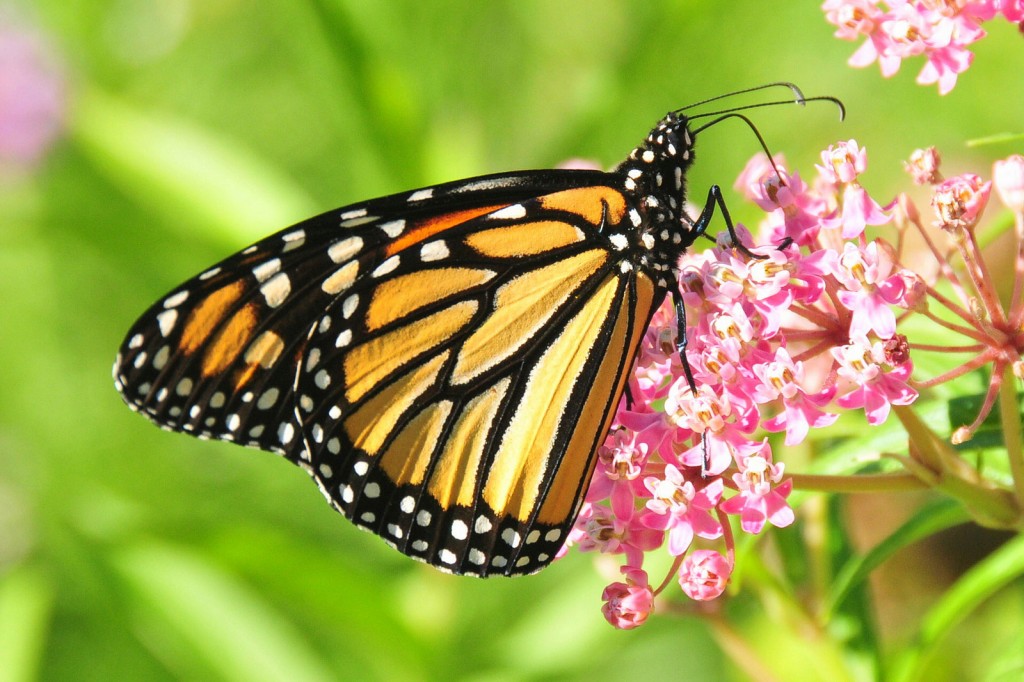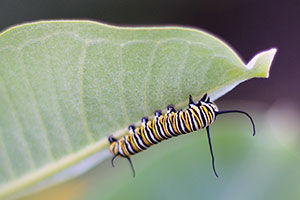What is something that birds, bats, butterflies, and dragonflies all have in common?
Well, yes, they do fly. But something that doesn’t occur to the typical person not well-versed in these animal types is that all of these creatures migrate. Now that summer is ending, days are getting shorter, and the air is just a bit cooler out there, we can expect to see these animals on the move soon.
This blog is part three of a short series on migrating animals. This topic: butterflies!

The Impressive Migrating Monarch
Most butterflies do not migrate. They have the ability to overwinter as larvae, pupae, or even adults depending on the species. Only one species is known to migrate like birds: the Monarch.
The beautiful orange and black Monarch Butterfly makes a very impressive journey every year. The Huron River Watershed and the rest of Michigan play an important role in that migration, having prime summer weather conditions for butterfly breeding. Come fall, the Monarch is headed south– about 3000 miles south. In fact, the migration path is so long that it outlasts any individual butterfly’s life span. One Monarch generation migrates south, the next generation migrates north, breeds two or three short-lived generations in the summer, the latest of which continues the cycle by heading south.
The trip south
In late August, Monarchs in Michigan begin their trip south, traveling along the Great Lakes coastline, though the Great Plains States, and eventually reaching their winter breeding grounds in southern Mexico and Central America. The Great Lakes are important features in the flight of the monarch– the insects use the winds over the lakes to speed them along on their journey. Monarch’s can not do this migration without proper rest and relaxation though. Shoreline habitats are important for feeding and recovering energy.
At the date this blog is being written (September 30), Monarchs are well out of Michigan. They should be flying through Oklahoma and crossing the Texas border!
Once the butterflies reach Mexico in November, they congregate into huge populations on the highlands and mountains of Mexico and Central America. There are only 12 traditional wintering sites, which means the species is susceptible to habitat changes and bad weather. In 2012 and 2013, bad weather conditions during the winter breeding season led to a Monarch population crash. In 2014, weather conditions were ideal and the population rebounded slightly, but the population is still 80% below the 20 year average.

The trip back north
In the spring, Monarchs slowly move their way back north. States on the Gulf Coast will see Monarchs return by early April, and by mid April the butterflies will have reached Kentucky and Tennesee. By early May, the first Monarchs can be in south Michigan and they will reach the Upper Penninsula by the end of May. Monarchs do continue into southern Canada as well, though for many individuals, Michigan is their final destination.

Give me more details!
Annenberg Learner hosts a terrific website giving photos and the migration timing for the Monarch. They keep an up-to-date blog on where the butterfly currently is found!



